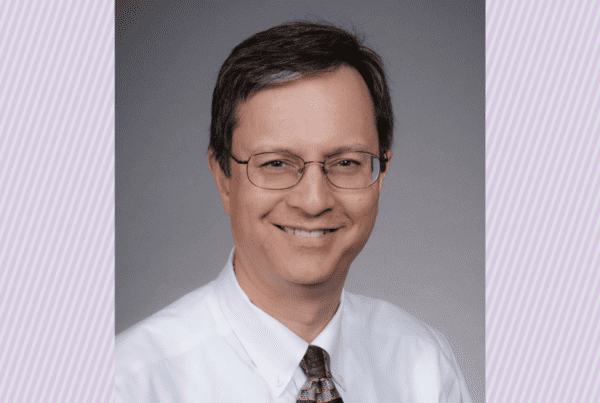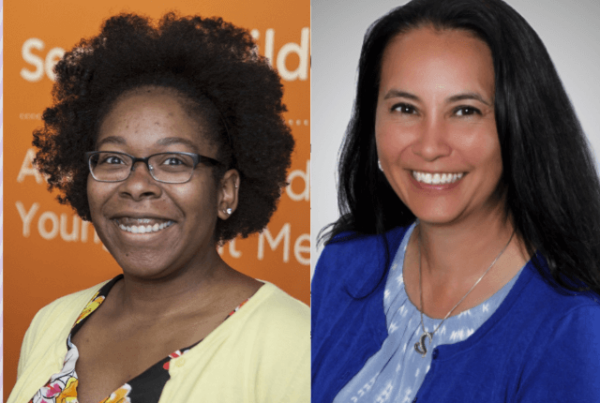When Bob Waterston became chair of the Department of Genome Sciences in 2002, it was a major coup for UW Medicine. As one of the pioneers in the field, he led efforts to complete the first genomic sequencing of animals, including the roundworm and mouse. His lab at Washington University in St. Louis was also central to the success of the Human Genome Project, which was completed in April 2003.
Since his arrival in Seattle, the department has gained international acclaim as a center for research and education in genetics, genomics, proteomics and computational biology. Now stepping down as chair, Dr. Waterston continues to be a member of the faculty. Dr. Stanley Fields began serving as department chair on September 1.
In a recent interview, Dr. Waterston talked about his career and genome sciences.
Q: How did you become interested in genome sciences?
A: As a graduate student, I was working on immunology. It was fascinating, but enormously complex and hard to get concrete answers at the time. I turned instead to molecular biology because it dealt with the fundamentals.
In the summer of 1969, I met Sydney Brenner while I was a student in a summer course at Woods Hole in Massachusetts. Sydney had just begun working on the roundworm C. elegans as a model organism for the investigation of developmental biology. That summer he gave his first public lecture on this work, which I found captivating. I joined his lab in England for postdoctoral studies in 1972.
C. elegans is a very simple system. As an adult, each animal is about 1 millimeter long and has just 959 cells. They reproduce in 3 1/2 days, so it is possible to study multiple generations in a short period of time, a critical feature for genetic analysis. I was especially interested in the process of development: how do you go from one cell to many cells of different types, each knowing what to do in the whole organism.
I continued my research on the worm when I joined the faculty at Washington University and back in England on sabbatical where I shared lab space with John Sulston. In earlier work, he sat at a microscope and watched individual embryos as they developed, recording the divisions of every cell. He found that every animal divides in exactly the same way. He and Sydney shared the Nobel Prize in 2002 for their pioneering work in the worm.
That sabbatical year marked the start of my collaboration with John first mapping and sequencing the worm genome and then in the Human Genome Project.
Q: What attracted you to Seattle?
A: With the successful sequencing of the worm, human and mouse genomes, I felt that the next challenge was to figure out what those sequences really meant. To do so, I looked for a chance to bring together a group of creative faculty members and saw a great opportunity in the new Department of Genome Sciences, which was formed by combining the previously separate departments of Genetics and Molecular Biotechnology. There was also the support of Bill Gates, who wanted to establish UW Medicine as a global leader in genomics and provided the funding for a new building to house the growing department.
Finally, Seattle is a great place to live, and I had worked previously with Phil Green and Maynard Olson. All of that was attractive.
Q: What was your approach to building the department?
A: We started with very strong faculty in genetics and genomics. We agreed to recruit the best and brightest young people entering this young field. We also created a very collegial atmosphere with lots of collaborations and interactions so that scientists with different expertise could come together to solve the challenges posed by genomics. The resulting advances in science have been all that I could have hoped for.
We worked hard at trying to improve diversity in the department and in genetics more broadly. At the department level, we’ve been most successful in increasing the representation of women at all levels.
We also have a summer internship program for up to 10 college students from underrepresented communities to work in our labs. As part of the program, we help them prepare for graduate school. Many have gone on to top graduate programs, including our own.
Q: What is the future direction of genome sciences?
A: The opportunities for understanding genomes are exploding. Sequencing is getting cheaper and faster, and being applied to analyze more and more questions. All of these advances and more will be required to understand the full complexity of genomes. But already we are learning more about what differences in the genome can mean. We are also gaining a better understanding of what happens when there is disease. This is the goal of precision medicine. If you understand the mechanisms of disease at a molecular level, you can intervene more effectively.
One example where we have gained a much deeper understanding of disease is the work of Evan Eichler and Mary-Claire King on neurological problems. Evan, in particular, has discovered mutations in different genes that cause different forms of autism. This information is bringing together families who learn from each other about dealing with a specific set of behavioral and caregiving issues.
Another example is the work of Jay Shendure, who is now the director of the Brotman Baty Institute for Precision Medicine. Jay was the first to use sequencing directly to discover the basis for a genetic disease. He took a group of kids from different families with the same disease and by sequencing showed that they all had a mutation in the same gene, meaning that this gene must be the cause of the disease.
Q: How are you dealing with the ethical issues of genome sciences?
We recognize that our work raises ethical dilemmas, and we encourage open discussion in the scientific community and general public. Genetic modification is one example. Today, because we understand the genome better and better, we can actually go in and modify it. This is in contrast to traditional genetics, which only used breeding programs to manipulate genomes, and it brings up questions about whether genetic modification is appropriate and if it should have limits.
Another dilemma is whether and how we should inform people about their predisposition to a genetic disease. There are also discussions related to human germline editing. So far, we don’t want to do this because changes in the germline would be passed down to future generations. But it is still an open question.
These are all important areas of concerns, and the public will need to be involved in addressing them.
Q: What has it been like to be department chair?
A: I’ve had a spectacular opportunity here with my colleagues. The science has been awesome and it’s a great group of people. It couldn’t have happened without the rest of the community contributing and helping with recruiting. I’m grateful to UW School of Medicine Dean Paul Ramsey for giving us the resources to attract the top people and to Bill Gates for giving us the Foege Building. It’s been enormously rewarding, and it’s been fun to come to work every day.


